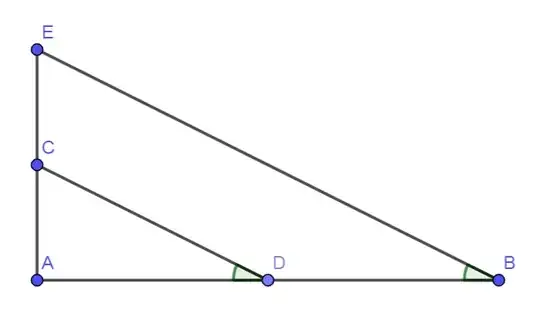Suppose that $a,b > 1$ are real numbers. Consider the following picture,

Where $AD = 1$, $AB = a$, $AC = b$, and $\angle ADC = \angle ABE$.
We can define, the product $a\cdot b$, geometrically as the length of $AE$.
I was able to prove geometrically that $(ab)c = a(bc)$. However, how does one justify the commutative law $ab=ba$?
Usually we think of $ab$ as representing the area of a rectangle and so the area does not change when the rectangle is rotated sideways. However, I am curious how we do this if we stick to proportions only.